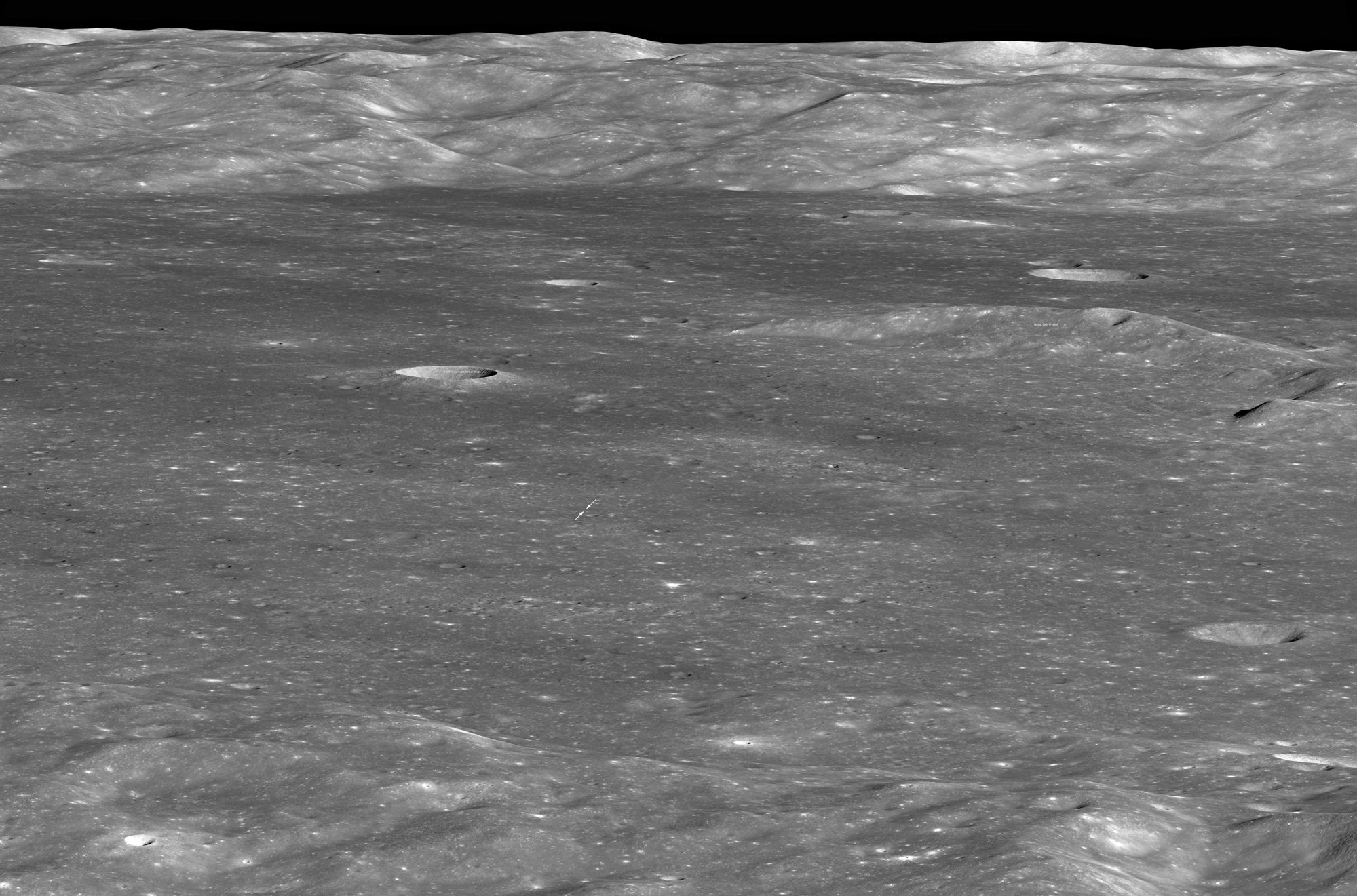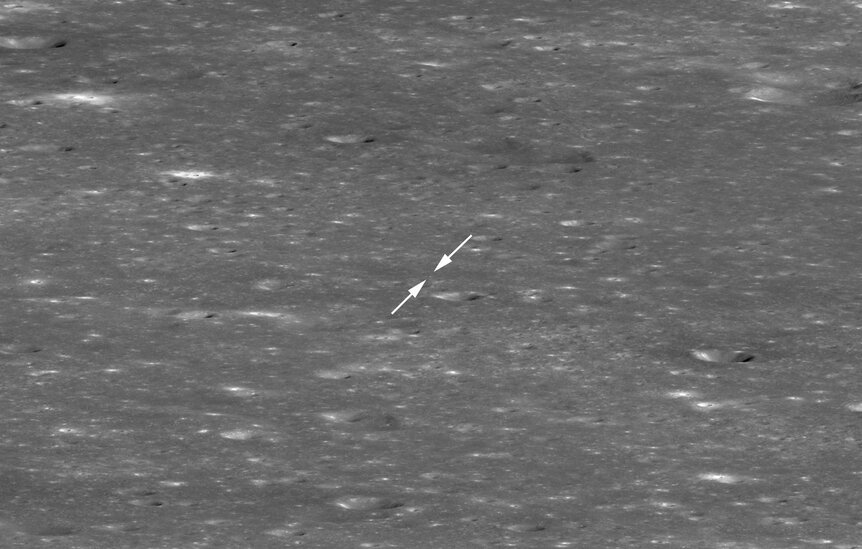Create a free profile to get unlimited access to exclusive videos, sweepstakes, and more!
LRO sees Chinese lander on the Moon's far side

Speaking of the Chinese lunar mission…
The Chinese National Space Agency dropped the lander and rover Chang'e-4 and Yutu-2 on the far side the Moon on January 3, 2019. Some very cool images and videos were released almost immediately, showing the lunar surface and the deployment of the rover. A few days later more images were released, including a pretty cool 360° mosaic showing the surroundings of von Kármán, the 180-kilometer-wide impact crater the lander sits in.
That's a pretty big crater (something that big hitting the Earth today would be an extinction-level event). The rover is only about 1.5 meters long and a meter high; the lander somewhat larger… but still pretty tiny compared to that magnificent desolation of the lunar landscape.
You'd think being able to get an image of it from orbit would be pretty hard, and finding it would be even harder. And you'd be right! But "hard" is relative when you're talking about the folks behind the Lunar Reconnaissance Orbiter. They released an image showing the Chinese mission sitting on the lunar surface.
Are you ready for this? It's not what you expect…
See it? Yeah, the arrows help. LRO usually looks straight down (what's called "nadir pointing"), but it can be commanded to tilt to one side and get an oblique view of the Moon. It tipped waaaay over (70°!) to be able to see where Chang'e-4 was, 330 kilometers west of LRO's position (the orbit of LRO takes it from roughly 50 to 140 km above the lunar surface, too, and orbital mechanics determines how far it is from the landing site at any given time).
From that distance the lander is only about 2 pixels wide, which would be lost among the lunar rocks and craters were it not made of metal, and therefor shiny. That makes finding it easier. Though not exactly easy, so good thing the coordinates were known well enough to reduce the search area considerably.
Still, yikes. After all, I cropped that image a lot to zoom in on the landing site. Here's the full image, to give you a better feel for how amazing this is:
Oof. You can see the lunar horizon there near the top, with the crater rim of von Kármán rising up toward it. Beneath are many hundreds of kilometers of the Moon's non-stop craters and dust and rocks and things*. For scale, that biggish crater to the upper left of the landing site is 3,600 meters across — over two miles. There's enough land there to hide a multitude of treasures… including two human-made objects still prospecting the area.
The rover is expected to have a lifetime of about 3 months, and the lander a year. That means there will be plenty of time to get more LRO images of them, hopefully at some point from a closer vantage.
I love seeing human hardware from orbit, especially when it's sitting on other worlds. It's more than just the amazing reminder that we've soft-landed equipment hundreds of thousands or millions of kilometers away, it's also the more subtle statement that we also have assets in orbit, able to monitor the surface, take images, create mineralogical maps, topological maps, even gravity maps. And our math, science, and engineering are so awe-inspiringly good that sometimes we can say, "Hey, let's have a look over there" and then we can do it.
This is rocket science. And it's something we do very, very well.




























